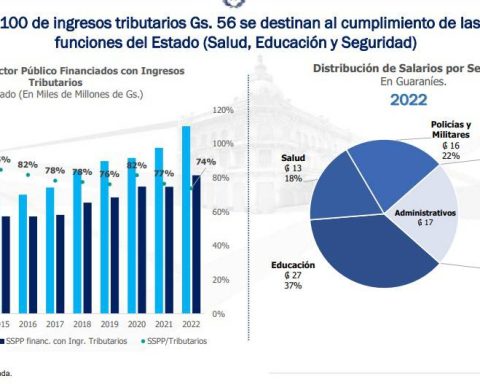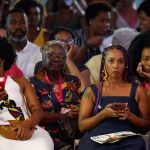The discovery was made recently in what was the San Andrés hospital, one of the oldest colonial buildings in the Peruvian capital, built by Viceroy Andrés Hurtado de Vildoso.
“We are in the oldest and most preserved cemetery in the city of Lima, used from 1552 to 1808, where we have found 42 remains of bodies buried between men and women between 30 and 50 years old,” the manager of the cemetery told AFP on Wednesday. Municipal Program for the Recovery of the Historic Center of Lima, Luis Martín Bogdanovich.
The researchers dug just 30 centimeters to discover dozens of bones, some in perfect condition.
“It is a cemetery from the colonial era. People from different social classes were buried here,” said Bogdanovich, who described the finding as “fundamental for the history of the city of Lima.”
In colonial times there were no public cemeteries and people, including Spaniards and Creoles, came to the hospital to die after suffering from an illness.
“The hospital was often a place to shelter and die well because it had a church,” according to the specialist.
After ceasing to function, the San Andrés hospital became in 1808 a convent for nuns, a sponsorship for abandoned children and then it was a public school until 2007, when an earthquake damaged it.
– Underground crypts –
An underground crypt measuring 12 meters by four meters wide was also found at the site, in the form of a brick vaulted structure, which would have worked for almost 300 years.
In the crypts, about eight meters deep, characters of higher social rank were buried.
“This is an exceptional find because (normally) burials are not preserved that well, not even inside the church,” said archaeologist Héctor Walde, head of the Lima archeology team.
“Most of the burials are of males and are in an extended position. There are different causes of mortality, but the most striking is syphilis in one case”, explained Walde.
The cemetery has an area of 150 square meters and some bones were found attached to concrete and adobe columns. Others were near water and sewage pipes.
The cemetery was located under the schoolyard where children played until 15 years ago.
Among the items discovered are ceramic tiles and fragments.
– Inca mummies? –
According to scholars, the mummies of the Incas Huayna Cápac, Pachacútec and Tupac Yupanqui, and two of their wives or Collas, would be buried in the place.
“The mummies were removed from Cusco where they were venerated. There is evidence that the mummies were buried in the hospital,” Walde said.
The Inca empire (1438-1533) had 14 emperors or Incas, but to date there is no place with their remains and their presumed location is a mystery of centuries.
The archaeological investigation, the Master Plan of the Historic Center contemplates the next restoration and recovery of the property, with the objective of creating the School of Traditional Knowledge of Lima, for the benefit of the Barrios Altos community and the entire city.
Lima was founded on January 18, 1535 by the Spanish conquistador Francisco Pizarro. Since its foundation it became the capital of the South American country.


















